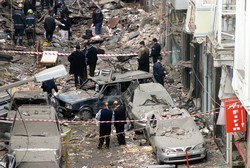Effective crisis communication after an attack
Many current EU projects are tackling security and pre-empting terrorism before it happens. Research is needed, however, to organise and fine-tune immediate and comprehensive communication responses to terror attacks. The EU-funded project SAFE-COMMS (Counter-terrorism crisis communications strategies for recovery and continuity) explored communication strategies for the aftermath of terror attacks. By analysing communication requirements and activities that follow attacks in different countries for effective crisis communications, the project delivered a comprehensive, flexible communication strategy for authorities. Recovery from a terror attack depends on a carefully planned and effective communication strategy aimed at the media, general public and internal employees of the authorities. Having contingency plans ensures an effective counter-terrorism communication strategy and can save lives. The global terrorist threat also requires that every government office, local authority and organisation is prepared. The project provided authorities across Europe at the governmental, regional and local levels with crisis communication plans specifically designed for terror attacks. The plans are based on analysis of numerous real-world case studies and the unique requirements of recovery from these attacks. By having a ready crisis communication strategy for such events, authorities can significantly minimise what the terrorists seek to achieve – public panic and the undermining of governments. The communication strategy comprises tactical modules, each corresponding to specific stages of post-attack recovery, types and duration of attack, audiences and aftermaths. SAFE-COMMS also developed a training and simulation programme, based on a crisis manual and audiovisual training aids. This should enable public authorities to develop, train and adapt their own terror crisis communication plans. SAFE-COMMS’ guide is designed to help public agencies develop and adopt effective crisis communication strategies and planning. With robust pre-emptive and responsive security plans, Europe can help invalidate terrorists’ aims from their onset by limiting both incidence and repercussions.
Keywords
Crisis communication, terror attacks, SAFE-COMMS, counter-terrorism, communication strategy



